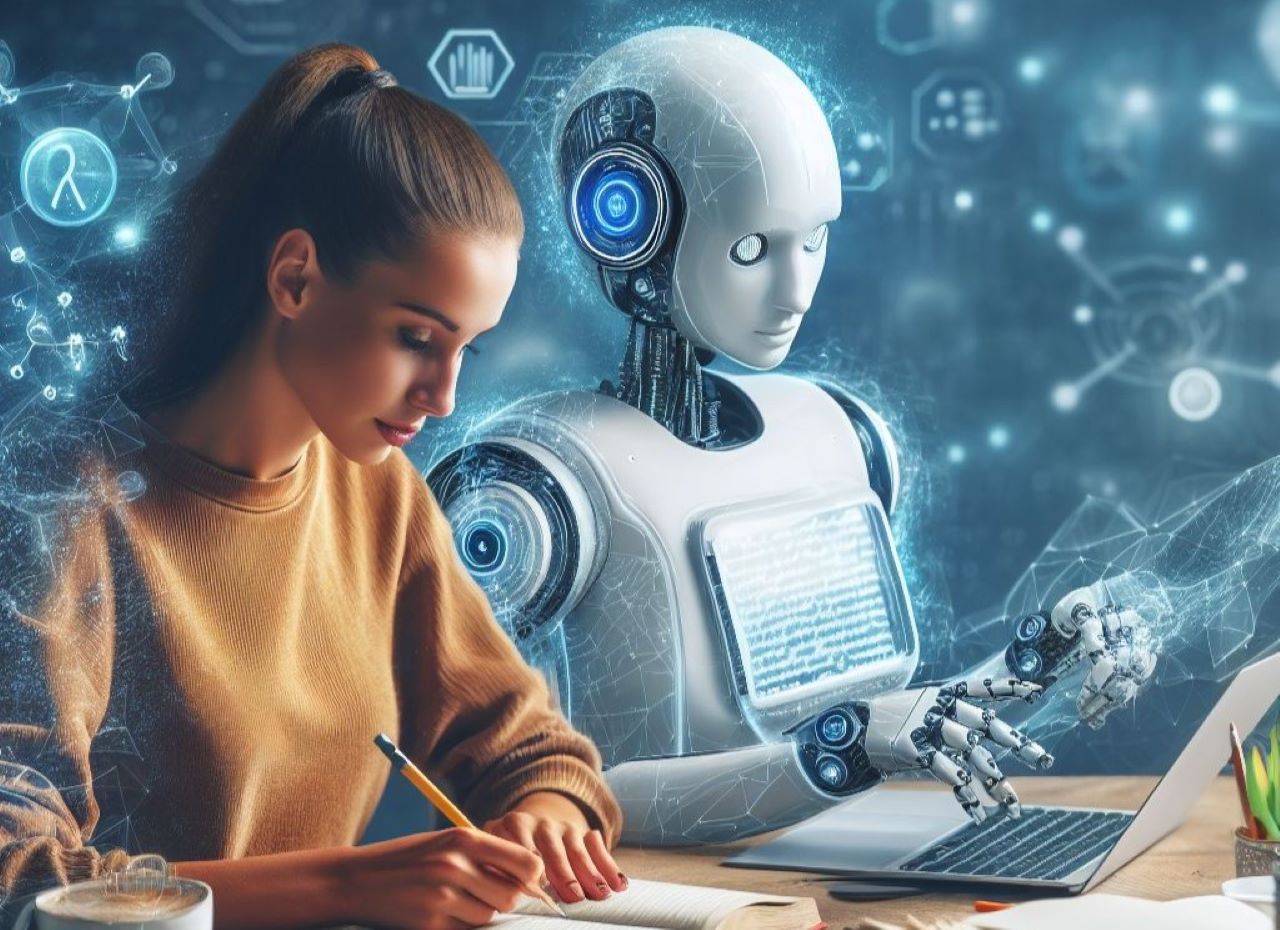At FIRST®, we're committed to providing our teams with the best tools and resources to foster innovation. Over the years, the FIRST toolbox has continued to expand, introducing cutting-edge technologies such as machine learning, high performance computer vision, and cloud-based CAD software. This powerful mix of industrial tools isn't just about helping build robots; it's about inspiring our participants to develop and hone career-relevant skills and expertise as they prepare for the world of tomorrow.
In recent years, there has been a rapid increase in access to Artificial Intelligence (AI); especially generative language model-based tools like Google Bard and ChatGPT. This has sparked a question among the FIRST community: can teams use these tools to help develop solutions? The answer is yes!
AI can be a game-changer for FIRST teams in various ways. It can assist with code generation, enabling more efficient and innovative programming. AI can help process sensor inputs for smarter decision-making, making robots more adaptable and responsive. Additionally, it can aid in translating materials into different languages, which is particularly valuable for teams with diverse backgrounds. AI can even help organize thoughts for creating outreach materials and prepare teams for judging by streamlining the communication of ideas and achievements.
We want our teams to have the best tools at their disposal. AI is just one more exciting addition to the toolbox, ready to help us reach new heights of innovation and problem-solving. However, just like any tool, AI must be used responsibly. This includes the use of critical thinking, checking the accuracy of information, verifying sources, and ensuring that the ideas are original or properly credited when derived from another source.
Current education standards endorse the adoption and modification of materials for reuse, provided intellectual property rights are respected. In FIRST, the same principles apply. Whether you're reusing or modifying code from a GitHub library or using generative language model-based tools, acknowledging the source is crucial.
So, what does this mean for teams using AI tools like ChatGPT? We are actively encouraging teams to use the power of AI in ways that reflect the team's creativity, effort, and voice while crediting the sources they used and acknowledging the assistance they received along the way. There are bound to be many questions about how to use AI in responsible and ethical ways, and this is new territory for all of us.
For now, FIRST teams can use AI to assist in the creation of award submissions, handouts, writing robot code, etc. Teams using AI to assist in these ways must provide proper credit and attribution, and respect intellectual property rights and licenses. Proper credit can look like this: Essay created by Team XXXX and ChatGPT, or similar to the byline of this blog post. In addition, Judges have been instructed to evaluate teams based on what they have accomplished in relation to the judging criteria, and not discredit a team or rank them differently based on the tools they used. FIRST may revisit this subject in future seasons as the world evolves and new standards for the use of AI are introduced.
I hope everyone has a wonderful season, and I look forward to seeing the solutions our teams create using this amazing technology!
Afterword
This blog was generated in part with ChatGPT using a series of prompts that I created. Several versions of the blog were produced, merged, and then edited to maintain my voice. I am the author, as these are my thoughts and my words while ChatGPT served as one of my contributors and editors, suggesting ways to arrange my text to make it easier to read while also checking for spelling, punctuation, and grammar. I also had several human editors review and make additions, suggestions, and edits. I hope this serves as a powerful example of how this technology can be used responsibly to assist in the act of creation without replacing the creator. For the curious, here are the initial prompts I used:
- At FIRST teams have access to engineering and computer science tools ranging from simple programming languages to advanced material fabrication.
- Over the years the team’s toolbox has continued to expand. Introduction of vision systems, machine learning, swerve drives, cloud-based CAD software, etc.
- Access to a very powerful mix of industrial tools inspires participants to develop and hone career-relevant skills and expertise
- Tools such as AI help prepare the youth of today for the world of tomorrow.
- With the rapid increase in accessibility to AI, specifically generative language model-based tools such as Google Bard and ChatGPT, the question has been raised – can teams use this to help develop solutions?
- Answer is yes – this is yet another tool in the toolbox
- FIRST actively encourages Teams and participants to use of all tools available to them.
- Whether it is assisting with code-generation, new ways to process sensor inputs for decision making, helping translate into other languages, or helping organize thoughts as you create outreach material and even prepare for judging (yes, really!)
- But as with any tool, AI must be used responsibly. This includes the use of critical thinking – is the information provided accurate? What is the source? Can you verify? It also includes attribution. Are the ideas original or modified from another source? Have you given credit where credit is due?
- Education standards actively encourage adoption and modification for reuse as long as you a) sufficiently modify the original and b) give credit, and that is no different in FIRST. When teams use materials from others, whether forked from a git hub library, or pulled from a generative language model-based tool, teams should recognize the source.
- So what does this mean for using AI tools in FIRST? It is totally 100% ok. In fact, we are actively encouraging teams to do so. Just make sure the resulting work reflects yourself and your team, and that you acknowledge the source, and the help you got along the way.
The image used for the blog was generated with AI using Microsoft Bing Image Creator powered by DALL-E 3 using the prompt “human and robot working together to write a story.”
Written by Chris Rake, Chief Operating Officer at FIRST®, with contributions and edits by ChatGPT

